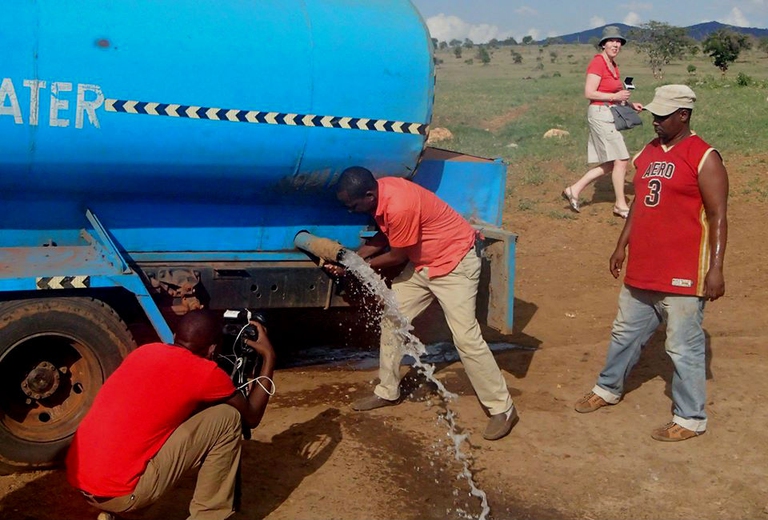
After a landslide led to twelve deaths on the island of Ischia, questions have been raised about the impacts of illegal building, tourism, and climate change.
Patrick Kilonzo Mwalua, 41, drives a rented tanker truck for more than 50 kilometres at least 4 times a week to bring fresh water to thirsty wild animals at the Tsavo West National Park, Kenya. Zebras, elephants and buffalos wait for him at the water hole. Since November 2016, the farmer brings 12,000 litres of
Patrick Kilonzo Mwalua, 41, drives a rented tanker truck for more than 50 kilometres at least 4 times a week to bring fresh water to thirsty wild animals at the Tsavo West National Park, Kenya.
Zebras, elephants and buffalos wait for him at the water hole. Since November 2016, the farmer brings 12,000 litres of fresh water at the hole so that animals can survive heatwaves and drought – like the one Mwalua experienced in 2009. In that year 40 per cent of wild animals died due to the lack of water.
A single thirsty elephant can drink up to 200 litres of water at a time and this proves how much the farmer’s work is important. “The animals come running the moment they see the truck, they even know the timings,” Mwalua told AFP. As a truckload of water costs about 240 euros, Patrick founded the Tsavo Volunteer and launched a crowdfunding campaign at GoFundMe. He aims to raise 300,000 dollars to launch a long-running project and buy a tanker truck and dig another borehole. To date, 277,000 dollars have been raised.
The Tsavo West National Park’s main source of water is the Jipe lake, on the border between Kenya and Tanzania. The lake lost a huge amount of water, nearly 10 metres over a decade. This led to a water crisis in many villages depending on the lake for their livelihoods, as well as it severely affected wildlife in the area. This is why Mwalua drives hours every day: to bring fresh water, until the much-awaited rain comes again.
Siamo anche su WhatsApp. Segui il canale ufficiale LifeGate per restare aggiornata, aggiornato sulle ultime notizie e sulle nostre attività.
![]()
Quest'opera è distribuita con Licenza Creative Commons Attribuzione - Non commerciale - Non opere derivate 4.0 Internazionale.
After a landslide led to twelve deaths on the island of Ischia, questions have been raised about the impacts of illegal building, tourism, and climate change.
Not much snow, peaks of 19 degrees Celsius in Norway and even 28 degrees in France: official data confirms the anomalously high temperatures of this past winter.
Ocean warming has risen to record highs over the last five years: just in 2019 the heat released into the world’s oceans was equivalent to that of 5-6 atomic bombs per second. The culprit, no doubt, is climate change.
What did Greta Thunberg tell participants at the 2020 World Economic Forum in Davos? Once again, the Swedish activist underlined the total lack of concrete solutions to the climate crisis presented by leaders so far.
The list of human and animal victims of the Australia wildfires keeps growing – one species might already have gone extinct – as the smoke even reaches South America.
Kivalina is located on a small island once guarded by sea ice, which is now melting due to global warming. While the sea threatens to wipe the village off the face of the Earth, its inhabitants refuse to give up their lives and traditions.
Thanks to activists, the voice of the world’s peoples resounded through the COP25 like an alarm bell. Governments didn’t reach the results they demanded, but their cries and messages were stronger than ever, reaching even those who weren’t in Madrid.
Climate change poses a risk for millions. However, women are the most vulnerable to its negative consequences: a few simple considerations by the Italian Climate Network help us perceive the global implications of this.
The COP25 ended two days late and with very few steps ahead made. Climate negotiations in 2020 will be an uphill battle as political will clearly seems to be lacking, once again.








